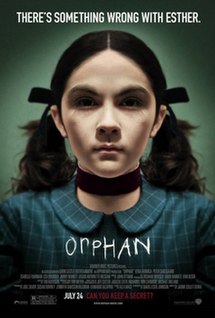What does Thomas Sutcliffe mean when he says “ Films need to seduce their audience into long term commitment. While there are many types of seduction, the temptation to go for instant arousal is almost irresistible"? Thomas Sutcliffe is saying that films need to draw in their audience through out the whole of the film, whilst there are many ways to do this, It's too tempting to make the opening of the film the hook that keeps the audience watching. The 'Seduction' of the opening is important and it can either be the make or break of the film. I agree that it is tempting to give films an interesting opening, as viewers are more likely to watch it rather than a film that slowly builds up tension.
According to Director Jean Jacques Beineix, what are the risks of ‘instant arousal’? DIrector Jean Jacques Beineix says that, If you start a film off very strong, then you have to be able to maintain this strength throughout the film, and there is the danger that the rest of the film will never be as strong as the opening.
Explain why “a good beginning must make the audience feel that it doesn't know nearly enough yet, and at the same time make sure that it doesn't know too little" If the Audience knows too much in the beginning then the plot of the film is pointless, however if the audience knows too little, they won't be able to connect with the film or understand what it is about. The directors want to leave the audience with just enough information to get them through the film, they don't want the audience to have discovered everything at the start.
What does critic Stanley Kauffmann describe as the classic opening? Why does this work? The 'classic opening' was where a film would start with an establishing shot, New York City seen from the east was commonly used. Then there would be a close up of a building, and then the camera went up the building the a window, and then through the window, pass the receptionist and go into the main office. Where the main character would sit. This type of opening worked as it told you; Where the film was taking place, the occupation of the hero, bust most importantly this type of opening told you the organization of the world - whether or not it was in order.
Why is Kyle Cooper’s title sequence to the film Seven so effective? Seven's psychotic title sequence already introduces us to the main characters obsession with needles. Without the use of dialogue Kyle Cooper has created an effective title sequence that draws the audience in, and creates a relevant opening to the film that sets the mood.
What did Orson Welles want to achieve with his opening to the film A Touch of Evil? What did Universal Studios do to it? Why? Orson Welles had intended the opening of 'A touch of evil' not to have any credits or title sequence. He wanted to "plunge the audience into the story without giving them time to prepare themselves'. However the studio didn't agree with them and choose to put in a score and credits, Orson Welles then wrote a 58 page memo pleading them not to put opening credits into it, he still lost the argument with the studio.
What is meant by “a favourite trick of Film Noir ”? What is the trick?
The trick known as 'a favorite trick of Film Noir' is when an opening of a film seems like the ending. The opening of Casino is an example of this trick. In which the main character narrates with confidence, and then is blown up with his car, the audience then want to know how the character go to the point. What did he do to get blown up and why did he do it, questions which can only be answered by watching the rest of the film.
How does the opening to the film The Shining create suspense?
The camera pursues the car, as if it is as predator, at a high angle from behind. The camera never strays to it's amazing surroundings but clings to the view of the car. Everything tells us that these people shouldn't be heading in this direction, which creates suspense as to what will happen to these people. The non-diegetic sound also tells us that something bad will happen with its low pitched drones.















